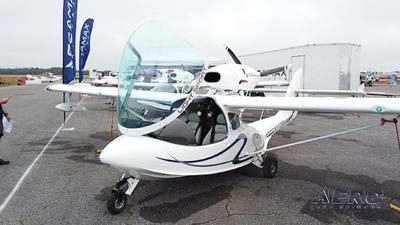The Airplane Appeared To Struggle To Maintain The Climb... The Wings Were Rocking Back And Forth As The Airplane Climbed
Location: Dahlgren Center, VA Accident Number: ERA25LA203
Date & Time: May 17, 2025, 16:00 Local Registration: N154RL
Aircraft: Seamax Aircraft LTDA Seamax M-22 Injuries: 1 Serious
Flight Conducted Under: Part 91: General aviation - Personal

On May 17, 2025, about 1600 eastern daylight time, a special light sport amphibious Seamax M-22 airplane (File Photo, below), N154RL, was substantially damaged when it was involved in an accident near Dahlgren, Virginia. The pilot sustained serious injuries. The airplane was being operated as a Title 14 Code of Federal Regulations Part 91 personal flight.
According to family, the pilot and passenger departed from his home-based airport near Fredericksburg, Virginia, then flew to Dahlgren, Virginia for an amphibious water landing on the Potomac River. Shortly after dropping off his passenger, the pilot taxied out for an attempted takeoff.
Surveillance footage from 4 separate cameras located at various sites on shore, showed the airplane during the initial takeoff run on a west to east track. After what appeared to be a normal takeoff run, the airplane rotated and lifted off, but during the initial climb, the airplane appeared to struggle to maintain the climb. The wings were rocking back and forth as the airplane climbed to about 75 to 100 ft above the water surface. The airplane then made a left turn to the north; shortly after, the left wing dropped, and the airplane abruptly descended in a left spiral until impacting the water. According to emergency personnel, the airplane floated briefly, and the pilot was rescued. A brief engine compartment fire ensued.

Post accident examination of the wreckage by the NTSB Investigator revealed the airplane had impacted the water in a steep nose down attitude. The water was about 8 ft deep at the point of impact. There was substantial damage to the airframe; the left wing was impact separated, the cockpit and fuselage were fractured and crushed in multiple locations. The empennage remained attached by control rods and cables. All flight control surfaces remained attached to their respective positions and were manually manipulated with corresponding cable movement. All fractures in the flight control cables had a “broomstraw” appearance indicative of overload.
The engine, mounted on top of the airframe in a pusher configuration was exposed to fire near the propeller side of the engine, however, the engine was largely intact, and most thermal damage was limited to plastics and wiring insulation. Engine crankshaft and valve action continuity was confirmed. The spark plugs showed normal wear. The engine appeared well lubricated, and the oil tank (dry sump forced lubrication system) was intact and full of oil.
The 3-bladed composite propeller remained attached to the hub and reduction gearbox assembly, and it was manually rotated without any hinderance. One of the blades was destroyed by fire. The opposing blades remained intact. During manual operation of the propeller, bay water was forced out of the cylinders and the air filter assembly.
The engine fuel line adjacent to the cylinders was examined and about 5-ounces of liquid with the smell and color of avgas was observed; it was free of water or other contaminants. The engine control unit was retained for further examination and download.
 ANN's Daily Aero-Term (06.04.25): NORDO (No Radio)
ANN's Daily Aero-Term (06.04.25): NORDO (No Radio) ANN's Daily Aero-Linx (06.04.25)
ANN's Daily Aero-Linx (06.04.25) Airborne 06.04.25: G100UL Legal Decision, FAA v Starship, Laser Conviction
Airborne 06.04.25: G100UL Legal Decision, FAA v Starship, Laser Conviction Airborne-NextGen 06.03.25: Hermeus Quarterhorse, VFS Forum, VX4 eVTOL
Airborne-NextGen 06.03.25: Hermeus Quarterhorse, VFS Forum, VX4 eVTOL ANN FAQ: Q&A 101
ANN FAQ: Q&A 101




